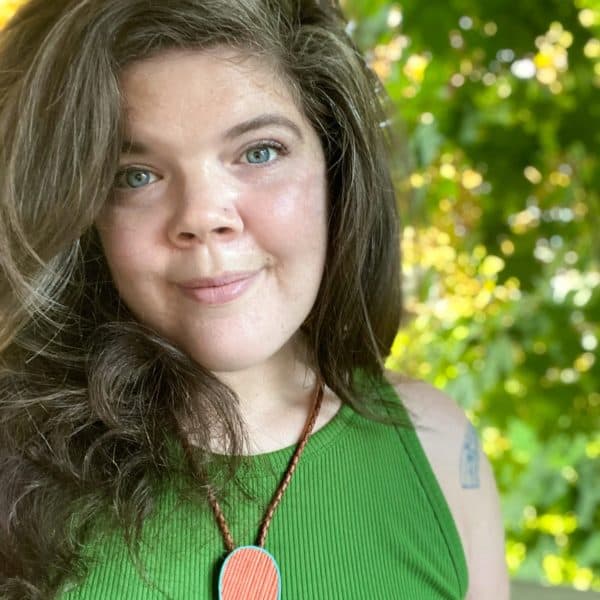Advertisement
To help fight invasive green crabs, restaurants are putting them on the menu
Resume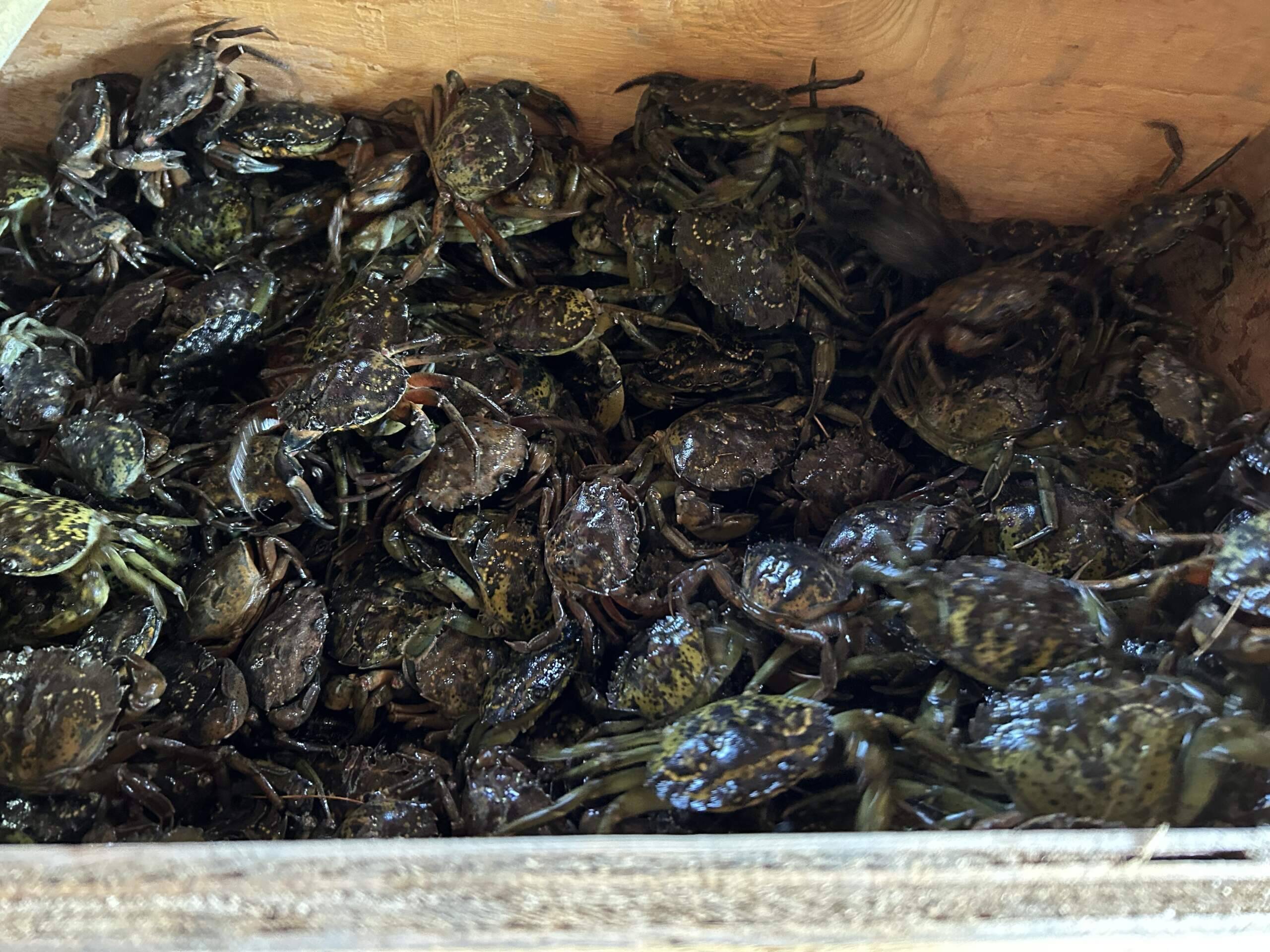
On a recent Saturday afternoon at Row 34 in Boston, owner and Chef Jeremy Sewall is getting ready to fry up lunch. In his hand is a soft-shell green crab, freshly caught, just cleaned. He dips the crab into a bowl of buttermilk, then seasoned flour, before dropping it into the fryer. It cooks for a couple minutes before it’s ready.
“I mean it still looks like a crab, right?” said Sewall. “It’s just got a little buttermilk and flour on it, but it still kinda has that shape, you can still kinda see the legs and the claws and the body … from here we’re going to season it and make a sandwich.”
The finished product is a whole fried green crab, with pickled vegetables, and a spiced aioli, on a brioche bun. It’s a tiny lunch, with a big impact. Green crabs are invasive to New England, and more and more chefs like Sewall are choosing to serve them on their menus to help control their exploding populations.

“It’s a good story, you’re eating an invasive species that actually tastes good, so it’s an easy sell,” said Sewall. “You know, everyone will try it once, the trick is to get them to come back for it. And I think so far so good with green crabs.”
And more and more customers are coming back. According to advocacy group GreenCrab.org, between this year and last, at least 24 restaurants currently have, or have served green crabs on their menus. That’s up from just a handful of places in 2022, when the website started keeping track.
“We’ve seen restaurants that originally started working with stock who have seen other restaurants cooking with green crabs in another way, whether it’s for their roe or for butter, and started working with green crabs again,” said Mary Parks, head of GreenCrab.org. “It’s definitely been something when I think one chef starts getting excited about it, they go around to their network, and more chefs start getting excited about it.”
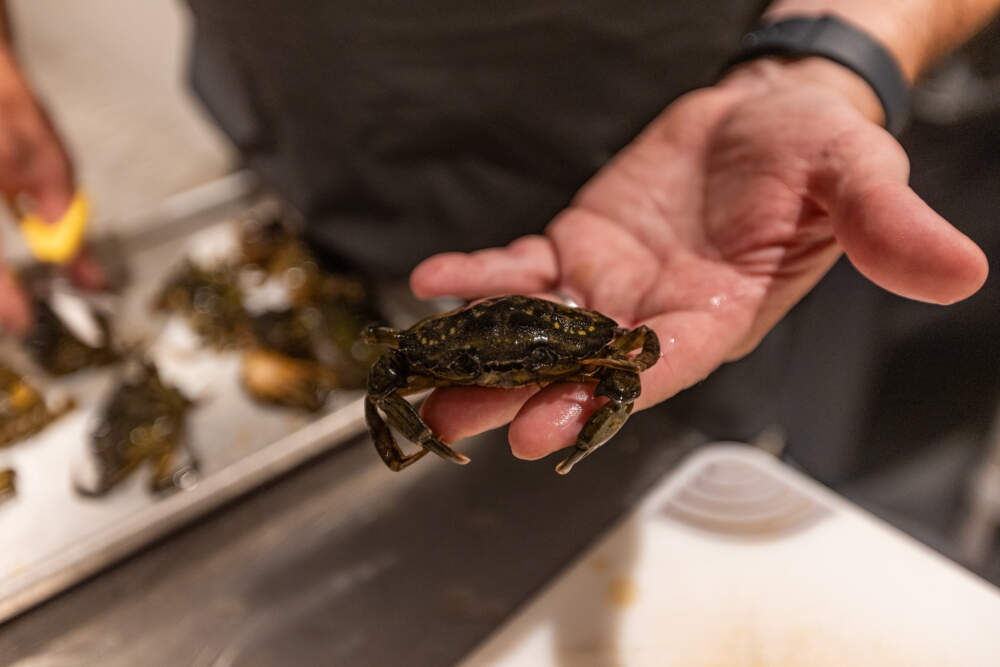
Green crabs have long been a delicacy in Italy, but chefs here in the U.S. are just catching on. At Cambridge’s Bar Enza, Chef Tony Susi is using green crabs weekly to make a stock that ends up in three of his dishes. Susi says he’s only been using the crabs since the spring, but he can see how they’d be a good option for a lot of chefs in the future.
“If it tastes good, and it’s reasonably priced, chefs, they are [definitely] going to want to work with it,” said Susi. “You wanna feel good about what you’re doing, a lot of chefs in restaurants are like, ‘I’m taking a look at the sustainability of things,’ be it meat, fish, produce, the environmental impacts. So, for me, it was a no-brainer.”
Surviving and thriving
Green crabs are an incredibly successful — and harmful — invasive species. They can survive in cold temperatures and thrive in varying environments. Chefs have stories of buying them alive and having them escape from their containers, finding hiding spots in their kitchens, or making snacks of their other seafood. If frozen alive in home freezers for just a few hours, they can come back to life once thawed, like a real life horror movie. This has helped them survive and thrive.
And that survival means devastating environmental impacts for a region that lives and dies by its seafood industries. One green crab can gobble up to 40 juvenile clams in a single day. They burrow into the walls of marshes and accelerate erosion. They also can clip eel grass in these areas, which are habitats for other species.
All of these impacts aren’t new; green crabs have lived along the East Coast for over 200 years. But what is new is the sheer number of crabs wreaking havoc. Carolyn Tepolt with the Woods Oceanographic Institute has studied green crabs for decades. She says warming waters due to climate change allow green crabs to survive the winter, which means a species that was previously kept in check is now thriving.
“If you have a warmer winter, green crabs do better,” said Tepolt. “I think it’s a combination of fewer crabs die over a mild winter, and then if you have a longer breeding season — this is probably how it is on the West Coast — you kind of have more opportunities for crabs to produce larvae, and for those larvae to spread and survive.”
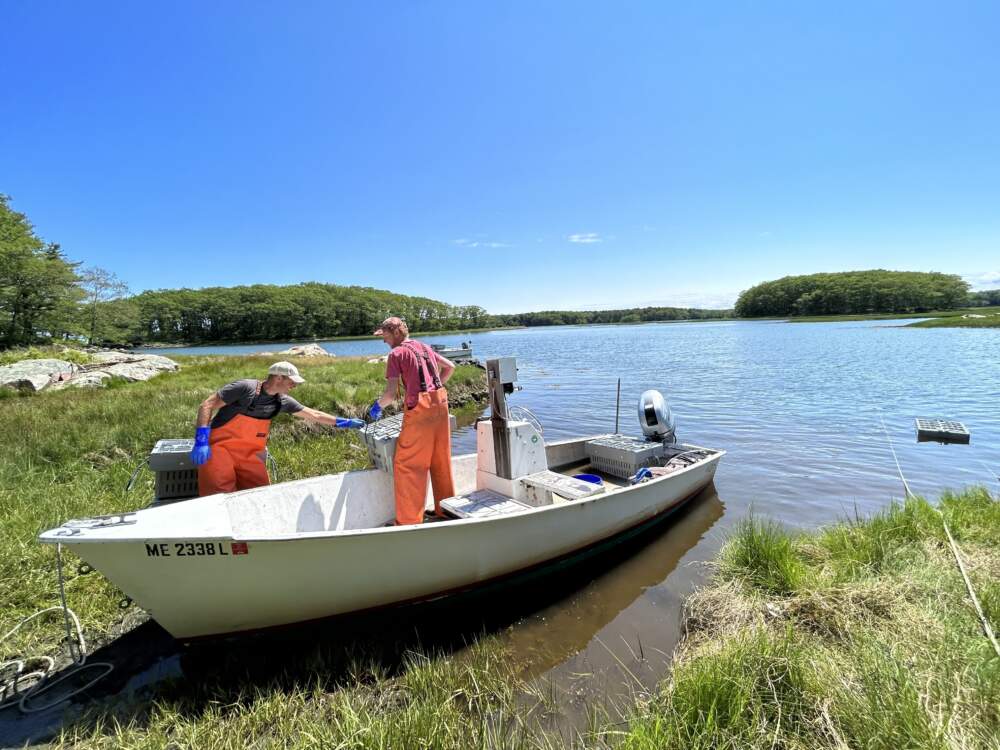
The overpopulation of green crabs can easily be seen on Brave Boat Harbor in York, Maine, where Sam Sewall and Mike Massi catch them to sell to a handful of local restaurants, including Row 34.
Sam Sewall is a lobsterman — and Jeremy Sewall’s cousin. The Sewalls have been making their money off the ocean in Maine for generations. The green crab season is largely split up into two times of the year: late spring and fall. During these times, Massi and Sewall will go out every couple of days to empty their nearly two dozen traps.
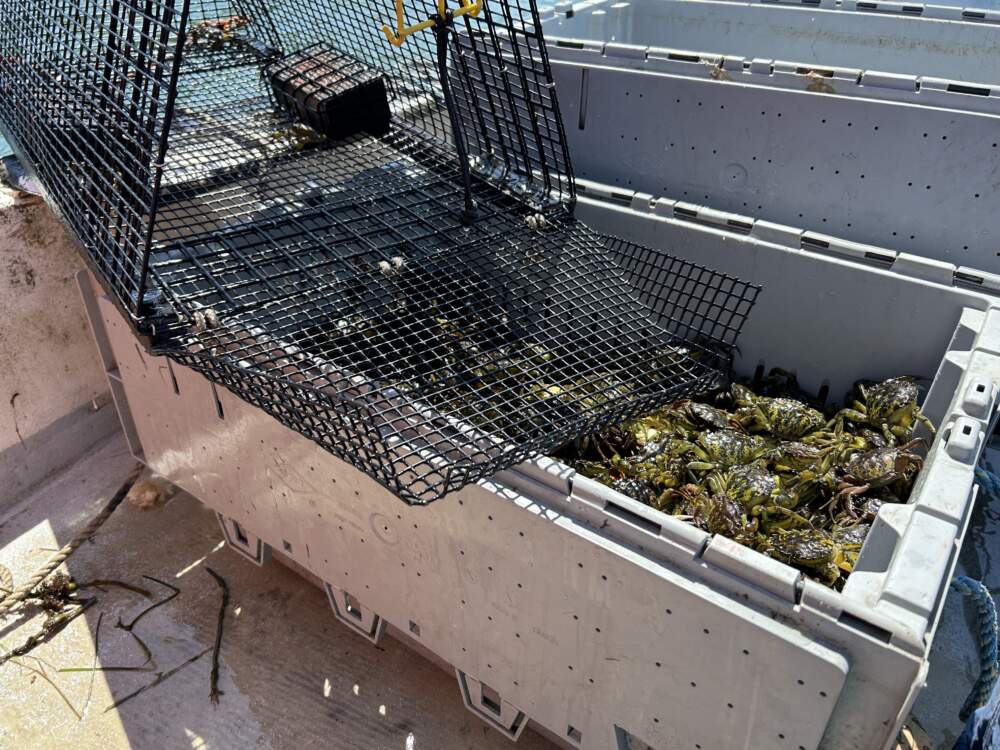
On a typical afternoon, they can catch 350 to 400 pounds of green crabs. Massi says when they pull up their traps, it’s rare to catch anything except green crabs.
“When these guys are around and fully established, it’s like nothing else has a chance,” Massi said.
Building a market
Green crabs may be fully established in marshes, but when it comes to selling them for food, those markets are really just beginning to form. When fishermen like Sewall and Massi catch seafood, they can either sell it directly to restaurants or to a wholesaler who distributes the catch. Wulf’s Fish is a major wholesale distributor of green crabs in Massachusetts. They just started selling the crabs last year. Alisha Lumea, director of marketing for Wulf’s, says the crabs are affordable. Plus, she says they pack a flavor punch, which makes them great options for chefs and home cooks.
“I’m encouraged by how much interest there’s been so far, for something brand new that people aren’t used to working with,” Lumea said. “But it will definitely take more interest, more experimentation, more people being open to trying something new … you know, I think it’s just about chefs and home cooks deciding they want to experiment with them and getting curious, and that takes time.”
These days, that experimentation is limited. The majority of the burgeoning green crab market right now is hard shell crabs. That’s what Wulf’s is selling. Cracking open that hard shell can be labor intensive — and result in a miniscule amount of meat. In this form, stocks and broths are the big things that cooks can whip up.
Soft shell green crabs can be more versatile. But very few fishermen in the U.S. can identify when a green crab is going to shed their shell, a process called molting. Immediately after molting, for just mere hours, their bodies are soft — and delicious. Fishermen know when crabs will molt because their bodies change before the process starts. Once a fisherman catches a crab that is about to molt and identifies those changes, they can separate those crabs from the rest, and wait for them to shed their hard shell. Once they do, they have a soft shell crab to sell.
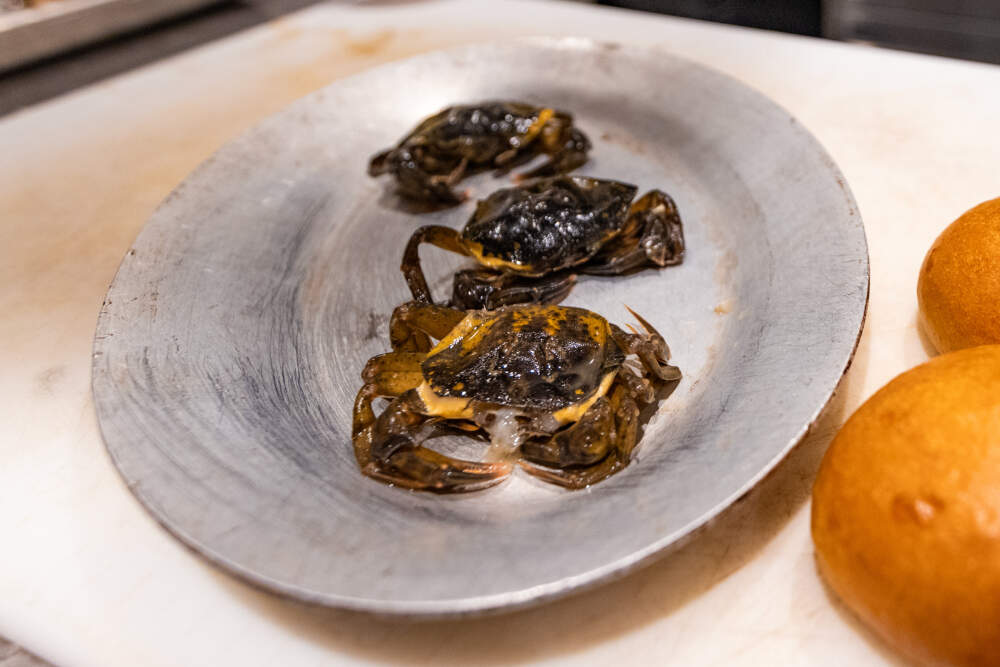
Unlike blue crabs, the changes that happen on green crabs before they molt are less obvious and less understood. Scientists at the University of New Hampshire have been studying the molting process for green crabs. They say they’ve pinpointed what they call “biological indicators” that show when a crab is about the molt. Gabriela Bradt led the research, which began in 2016. She says the key now is teaching those catching green crabs and other seafood the knowledge.
“We can do it, it’s been proven that it is possible, it’s just, it’s so early,” Bradt said. “You know, the early adopters are the ones that pave the way, but you have to get them first.”
Sewall and Massi learned from Bradt and her team. This season for the first time, they are operating an indoor soft shell molting set-up. It’s a lot of work they say, but their hope is to open and operate a soft shell green crab fishery over the next few years to sell to chefs like Jeremy Sewall at Row 34.
“There’s still challenges that are coming our way from indoor molting, but we’re working on them, we’re learning a tremendous amount each year, mostly from our mistakes,” said Massi. “We’re getting closer and closer to being able to share this information with others and hopefully build a really robust market for softshell green crabs.”
Getting buy-in
But that market will take buy-in all around. Even if more customers want them, chefs are limited in their supply unless more fishermen decide to invest in catching them. Still today, the majority of green crabs are caught for bait. It doesn’t make financial sense for those on the water to dedicate time to catching seafood that sells for mere cents on the pound.
Massi says one potential solution is to emulate what’s happening in Ipswich and other nearby towns, where officials are operating a bounty program. Each year, towns like Gloucester, Essex and Newbury offer green crab fishing licenses to a handful of people. Each bounty is weighed, and those licensed fishermen are paid 40 cents for every pound caught. Ipswich Police Chief Paul Nikas, who heads the program, says that extra money is on top of whatever they make for selling the crabs — either as bait, food or other uses, like compost — and, it makes a difference.
“I know a couple of our crabbers basically say the 40 cents is their food and traps for the year,” said Nikas. “So that gives them the incentive to stay out there.”
Since its inception in 2016, Nikas estimates 80,000 to 100,000 pounds of green crabs have been removed each year. The program is also funded partially through the state’s Division of Marine Fisheries. The DMF said that since 2015, over four million pounds have been caught and repurposed, mostly for bait, statewide.
For fishermen like Massi and Sewall, every green crab sold for bait is a missed opportunity to win over a new customer — either at a restaurant or in a home kitchen.
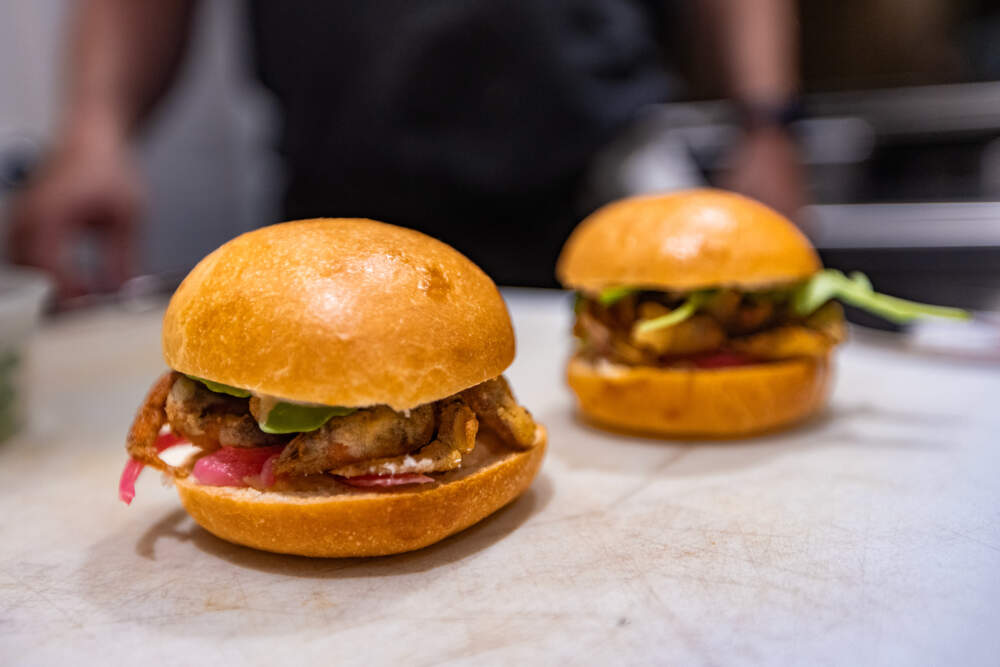
Chef Jeremy Sewall says getting that buy-in from diners is key. He’s seen fish, previously seen as less desirable, win over hearts and minds when famous chefs elevated them, like when Julia Child popularized monkfish. Known for years as a trash fish, it’s now a delicacy on menus around the world
“My family up here in Maine — you ate cod, you ate halibut, you ate scallops, you ate lobster; you didn’t eat pollock, or hake, or redfish, or flounder,” said Jeremy Sewall. “I used to bring pollock in from fishing all day and my grandmother would steam it and feed it to the cats. But these are now mainstream fish and mainstream seafood because we’ve done a great job of eating all the other ones, so there’s just not enough of them, so we have to figure out how to harvest the ocean in a different way."
This segment aired on September 6, 2023.
